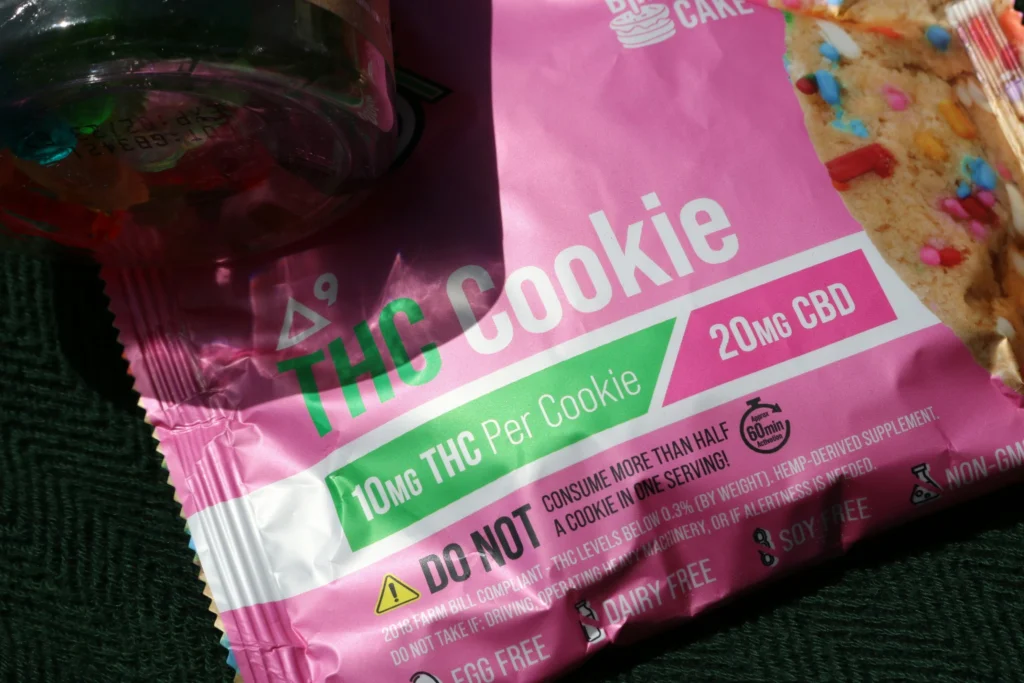Vaping vs. Edibles: Comparing the Pros, Cons, and Best Use Cases

With cannabis legalization in full swing across Ontario, Canada, people are diving into the world of consumption methods like never before. Two of the most popular ways to enjoy cannabis are vaping and edibles. But which one’s right for you? In this deep dive into vaping vs edibles: pros and cons, I’ll break down the benefits, drawbacks, and ideal scenarios for each, sprinkled with insights tailored to what folks in Ontario are searching for, like cannabis consumption methods, THC edibles effects, and vape pens Canada. Whether you’re a seasoned user or a curious newbie, this guide will help you make an informed choice.
What Are Vaping and Edibles?
Let’s start with the basics. Vaping involves inhaling vaporized cannabis oil or flowers through a device like a vape pen or vaporizer. It’s sleek, portable, and delivers a quick hit. Edibles, on the other hand, are food or drink products infused with cannabis—think gummies, brownies, or even infused beverages. They’re discreet and tasty but work differently in your body. Both have unique vibes and understanding their pros and cons can steer you toward the best choice for your lifestyle.
Vaping: Pros and Cons
Pros of Vaping
- Fast-Acting Effects: Vaping delivers THC or CBD to your bloodstream through your lungs, so you feel the effects within minutes. This makes it ideal for those seeking quick relief from stress, pain, or anxiety—perfect for a busy day in Toronto or Ottawa.
- Precise Dosage Control: With vape pens, you can take small puffs and gauge how you feel before going further. This is great for beginners or those experimenting with cannabis dosage control.
- Discreet and Convenient: Vape pens are compact, easy to carry, and produce minimal odor compared to smoking. You can use them on the go without drawing much attention in places like Kitchener or London, Ontario.
- Variety of Options: From fruity to earthy flavors, vape cartridges offer something for everyone. Plus, you can choose between THC, CBD, or hybrid blends, catering to your desired cannabis strains for vaping.
Cons of Vaping
- Health Concerns: While vaping is considered safer than smoking, long-term effects are still being studied. Some worry about lung irritation, especially with low-quality vape products. Always buy from licensed dispensaries like OCS to ensure safety.
- Upfront Costs: A good vape pen can cost $50–$150, and cartridges aren’t cheap either. For someone on a budget in Hamilton or Windsor, this can feel like a steep investment.
Battery Dependency: Forgot to charge your vape? You’re out of luck. This can be a hassle during outdoor adventures in Ontario’s cottage country.
Edibles: Pros and Cons
Pros of Edibles
- Long-Lasting Effects: Edibles take 30–90 minutes to kick in, but the high can last 4–8 hours. This makes them perfect for chronic pain relief or a chill evening in Mississauga.
- No Lung Irritation: Since there’s no inhalation, edibles are a lung-friendly option, ideal for those wary of vaping health risks.
- Discreet and Tasty: Pop a gummy or sip a cannabis-infused drink, and no one’s the wiser. They’re perfect for social settings or discreet use in public spaces like Toronto’s Distillery District.
- Precise Dosing: Most edibles come with clear THC or CBD measurements (e.g., 10mg per gummy), making it easy to control your intake, especially for edibles for beginners.
Cons of Edibles
- Delayed Onset: Waiting up to an hour for effects can test your patience. Overdo it by mistake, and you might end up couch-locked—something Ontario users often mention in forums.
- Risk of Overconsumption: The delayed kick can trick you into eating more, leading to an intense high. Always start low (2.5–5mg THC) and go slow, as advised by Health Canada.
- Inconsistent Effects: Your body’s metabolism, what you’ve eaten, and even stress levels can affect how edibles hit. This unpredictability frustrates some users searching for consistent cannabis effects.

Vaping vs. Edibles: Key Differences
Aspect | Vaping | Edibles |
Onset Time | 2–10 minutes | 30–90 minutes |
Duration | 1–3 hours | 4–8 hours |
Ease of Use | Requires device, battery | Just eat or drink |
Health Impact | Possible lung irritation | No inhalation, digestive processing |
Discretion | Minimal odor, portable | Highly discreet, no odor |
Cost | Higher upfront, moderate ongoing | Low upfront, variable ongoing |
Best Use Cases for Vaping
- Quick Relief: If you need fast-acting effects for anxiety, pain, or nausea, vaping is your go-to. It’s perfect for a quick session before a stressful meeting in downtown Toronto.
- Social Settings: Vaping’s portability and low odor make it great for festivals or hikes in Ontario’s Algonquin Park.
Experimenting with Strains: Love trying new cannabis strains for vaping? Vape cartridges let you switch flavors and effects easily.
Best Use Cases for Edibles
- Long Sessions: Planning a cozy movie night or a deep meditation session? Edibles’ long-lasting effects are perfect for extended relaxation.
- Medical Use: For chronic pain or insomnia, edibles provide sustained relief, making them a favorite for medical users in Ontario searching for THC edibles effects.
Discreet Consumption: If you’re in a public place or with non-users, edibles blend in seamlessly—no device, no fuss.

What Ontario Users Are Searching For
Based on local trends, Ontarians are curious about safe cannabis consumption, vape pens Canada, and edibles for beginners. Many also search for cannabis dosage control to avoid overdoing it. The Ontario Cannabis Store (OCS) reports strong sales for both vape cartridges and gummies, reflecting their popularity. Forums like Reddit’s r/trees and local dispensary reviews highlight a preference for edibles in social settings and vaping for quick, controlled doses.
Safety Tips for Both
- Vaping: Stick to regulated products from licensed retailers like OCS to avoid harmful additives. Clean your device regularly to prevent residue buildup.
- Edibles: Store them securely, especially if you have kids or pets. Always check the THC content and wait at least 90 minutes before taking more.
General: Know your limits, stay hydrated, and avoid mixing with alcohol. Check Health Canada’s cannabis guidelines for more tips
Which Should You Choose?
It depends on your needs. If you value speed and flexibility, vaping’s your best bet. If you prefer long-lasting, discreet effects and don’t mind waiting, edibles are the way to go. Many Ontario users mix both—vaping for daytime and edibles for evenings. Experiment, start low, and find what vibes with you.
FAQs
Q: How long do edibles take to kick in compared to vaping?
A: Edibles take 30–90 minutes to take effect, while vaping works within 2–10 minutes.
Q: Are vape pens safer than edibles?
A: Vaping may irritate lungs, while edibles avoid inhalation but carry a risk of overconsumption. Both are safe when used responsibly with regulated products.
Q: Can I use vaping and edibles together?
A: Yes, but start with low doses to avoid overwhelming effects. Wait for edibles to kick in before vaping.
Q: Where can I buy safe vape pens or edibles in Ontario?
A: Purchase from licensed retailers like OCS or authorized dispensaries to ensure quality and safety.
Q: What’s better for beginners: vaping or edibles?
A: Vaping is often easier for beginners due to faster onset and easier dose control, but edibles are great for those who prefer no inhalation.




